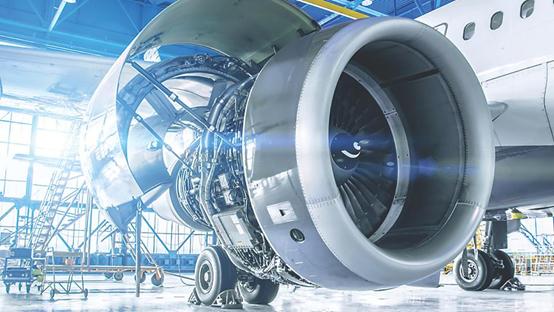How are Magnets Used in Aerospace?
What are the applications of magnets in aerospace?
Aerospace permanent magnet motors
The magnetic properties of the permanent magnets in a magnet motor directly affect the efficiency, safety, and reliability of the permanent magnet motor.

If the motor is not designed or used properly, the permanent magnets in the motor are prone to irreversible demagnetization under the action of factors such as high temperature, chemical corrosion, mechanical vibration, and armature reactions from inrush currents, which can cause the motor performance to drop dramatically and may even lead to motor stalling or burnout.
Since aviation motors face many harsh operating conditions, such as mechanical overload caused by vibration and shock, current overload during starting or reversing, and complex atmospheric and temperature conditions, and at the same time aviation motors have high requirements for reliability, permanent magnet motors are to be widely used in the aviation field.
To solve the demagnetization problem of motor permanent magnets, it is necessary to analyze the causes of motor permanent magnet demagnetization and find out ways to improve the demagnetization resistance of motors.
Analysis of the causes of permanent magnet motor demagnetization
The causes of the demagnetization of permanent magnets in permanent magnet motors can be summarized in the following three cases.
The material itself causes the demagnetization of the permanent magnet material thermal stability, time stability, chemical stability.
External magnetic field stability and vibration resistance and other properties are not up to standard is the main reason for the loss of magnetism of permanent magnet motor.
Application of magnetic levitation technology
With the emergence of large-scale integrated circuits, new permanent magnet materials, and the urgent need for scientific and technological development, magnetic levitation technology has developed rapidly and has been applied in many fields.
For example, in the transportation industry, the KOMET magnetic levitation train developed by German Airlines in 1977 reached a speed of 369km/h on a special experimental track. 1976), in 1981 Hanover European International Machine Tool Exhibition, the first launch of the B20/500 magnetic floating spindle system, and in 35000r / min under the live drilling, milling performance, the company also in 1983 the 5th European Machine Tool Exhibition exhibited a series of magnetic floating bearings and its support of the machine tool spindle components.
At present, foreign high-performance machine tools generally use magnetic floating spindle system, speed is generally 40,000 ~ 70,000r/min, the highest speed of 180,000r/min ultra-high-speed grinding machine has been put into application a few years ago: there are vacuum molecular pumps for the space industry, a variety of flywheels, such as the 1986 France in the SPOT Earth observation satellite installed in the attitude control with magnetic floating flywheel, etc.
Classification of magnetic floating bearings
In essence, any magnetic levitation problem is, in summary, a magnetic levitation bearing problem, and its mechanism is basically the same, and the research methods are similar. The magnetic levitation bearing is a new type of mechatronic bearing that uses magnetic field force to levitate the rotor in space without contact, which integrates the knowledge of multiple disciplines such as mechanics, rotor dynamics, electromagnetism, electronics, control theory, and computer science, and is a high-tech frontier technology.
According to the working principle of magnetic levitation bearings, they can be divided into the following categories:
Partial Contact Partial contact magnetic floating bearings are used to unload or isolate vibrations, mainly used on rocket engines and centrifugal separators.
This category can be subdivided into non-control type, AC control type, and DC control type.
It is possible to achieve completely uncontrolled levitation using antimagnets and superconductors, but the levitation weight of the former is too light for practical application, and the latter is expensive and restricted in application.
The AC-controlled type is a way to maintain balance by using LC resonance circuit to make use of the impedance change generated by rotor displacement to make the coil current on the electromagnet change.
DC control type can be divided into axial active control type (single-axis active control), radial active control type (two-axis or four-axis active control), and omni-directional active control type (five-axis active control).
In addition, there are many classifications of magnetic floating bearings, such as active and passive according to the suspension mode, the main industrial application of active magnetic bearing (Active Magnetic Bearing, abbreviated as AMB, sometimes referred to as magnetic bearings: according to the structure of vertical and horizontal, internal rotor type or external rotor type: according to the force of attraction and repulsion type, etc.
Solenoid
Electromagnets are used in aerospace, mechanical equipment, metallurgical industry, mining, ships, power electronics, coal, mines, pneumatic tools, traffic, lifting and transportation, household appliances, electric motors, anti-theft locks, textiles, amusement equipment rental, medical equipment, fitness equipment, office supplies, vending machines, intelligent toys, decorative building materials, chemical plants, plastics, laminated glass, porcelain, concrete, paper industry, the food, concentrates, manufacturers and operators of sewage treatment, technology stores buyers, foreign trade companies, universities and colleges, scientific research units and other related manufacturing industries.
Electromagnets include lifting electromagnets, brake system electromagnets, traction electromagnets, push-pull electromagnets, frame electromagnets, tubular electromagnets, turntable electromagnets, maintenance electromagnets, double-angle electromagnets, suction cup electromagnets.
